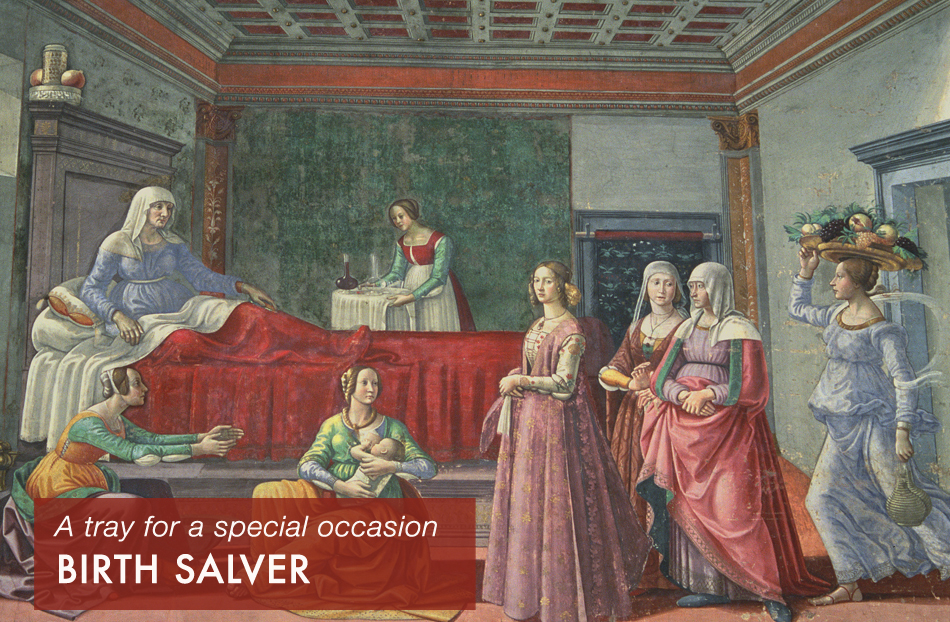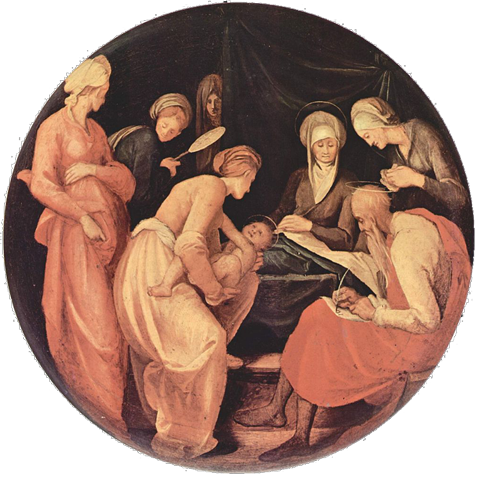

Paolo Uccello, Birth of the Virgin, 1433–1434. Prato, duomo
Pontormo (Jacopo Carrucci, known as), Birth of St John the Baptist, 1529–1530, birth salver. Florence, Galleria degli Uffizi
Top: Ghirlandaio (Domenico Bigordi, known as), Birth of St John the Baptist, c. 1485–1490. Florence, Basilica di Santa Maria Novella
In Renaissance Italy, a very unusual item was made by some of Tuscany's artisanal workshop. This was the birth salver, a tray made specifically for mothers who had just given birth. Dodecagonal, round or square in shape, the object was used to serve meals to the new mother, still weak after the ordeal of labour, but it was also a gift to mark a special event, so much so that the salvers were hung on the walls and handed down from generation to generation.
Until around 1470, these trays were mostly painted, after which inlaid wood became more fashionable. Painted salvers varied greatly in quality, depending on who commissioned them. The most important Florentine families, such as the Medici and Tornabuoni families, commissioned unique salvers, often painted by the greatest artists of the time. However, the artisanal workshops also had pre-painted salvers available, frequently with a space left blank for the relative coat of arms or a personal message.
Even major artists such as Masaccio and Pontormo decorated birth salvers, and the most popular scenes were the Nativity of Mary or of St John the Baptist. In the 16th century, some potters made specific sets of crockery to serve new mothers while still in bed, designed to improve the efficiency of these special trays.

